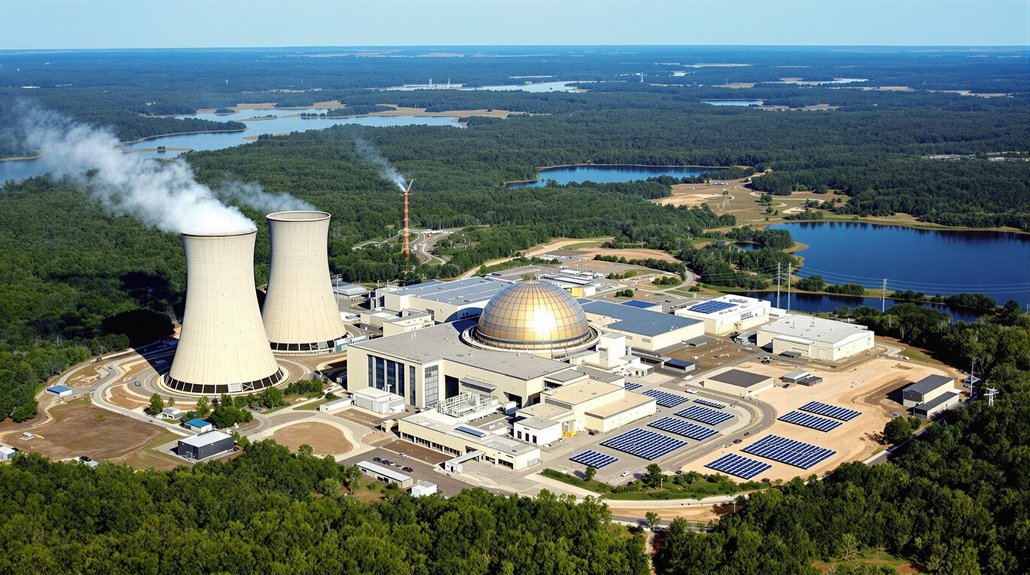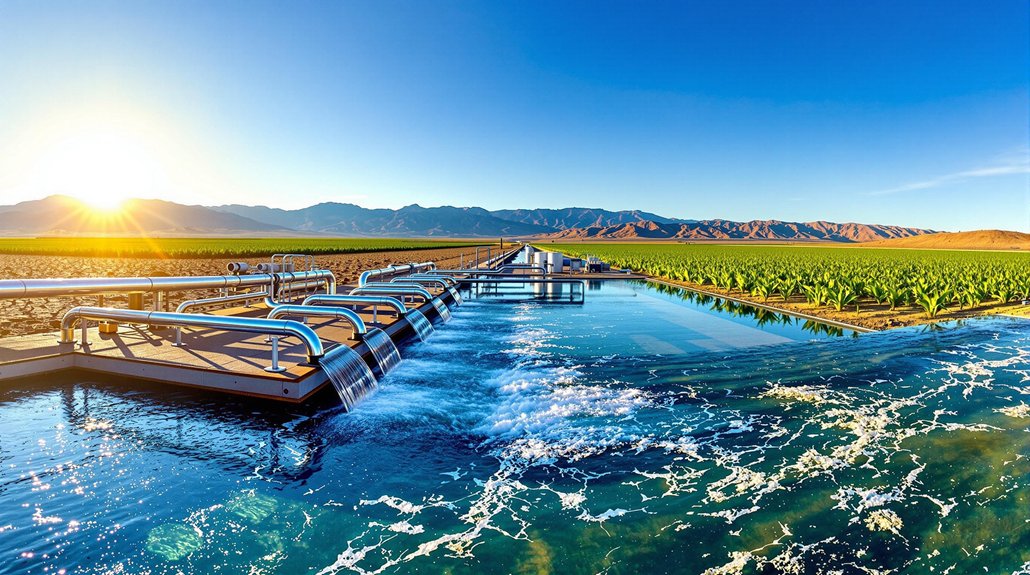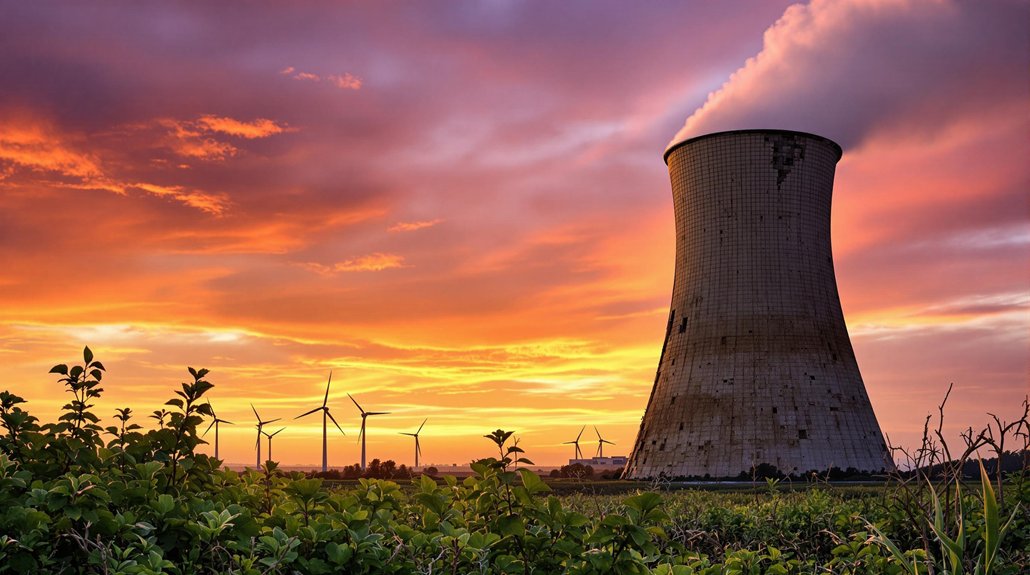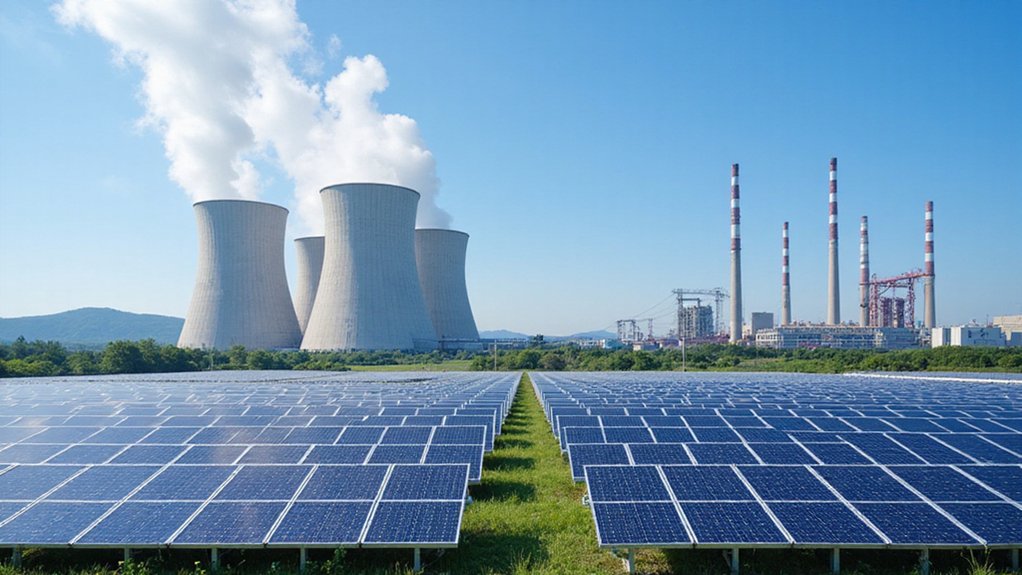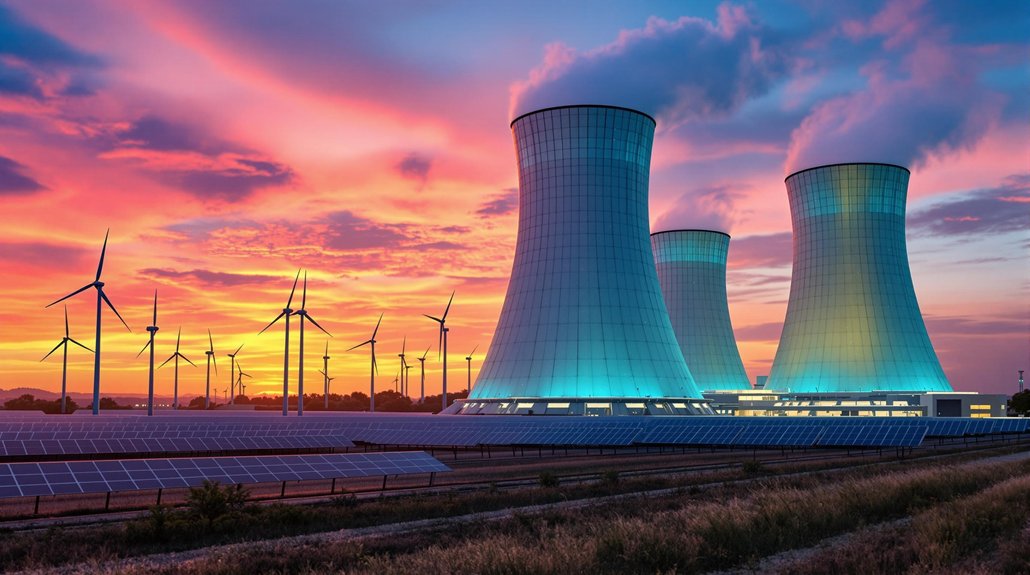Duke Energy wants Robinson Nuclear Plant to run until 2050, serving over 500,000 South Carolina homes. The plant provides reliable carbon-free power that exceeds alternatives like gas, coal, and solar. It supports local jobs, tax revenues, and protects customers from fuel price swings. However, aging infrastructure requires significant investment, and nuclear waste remains a challenge. The decision will impact South Carolina’s energy future as demand could grow 30-fold by midcentury.
A cornerstone of South Carolina’s energy infrastructure is set to continue its crucial role for decades to come. Duke Energy has applied to extend the Robinson Nuclear Plant‘s operations until 2050, adding another 20 years to its lifespan. The plant currently generates about 759 megawatts of electricity annually, providing power to more than 500,000 homes in the region.
Duke Energy seeks to extend Robinson Nuclear Plant operations through 2050, powering over 500,000 South Carolina homes for decades to come.
The Robinson facility contributes considerably to meeting South Carolina’s growing energy demands. As the state’s population and economy expand, reliable power sources become increasingly essential. Nuclear energy offers consistent electricity with a high capacity factor that surpasses natural gas, coal, and solar alternatives. Having been the first commercial nuclear plant in the southeast when it opened, Robinson has a long history of pioneering energy production in the region.
Environmental benefits stand as a key advantage for continuing operations. The plant produces carbon-free electricity, helping South Carolina reduce emissions while supporting Duke Energy’s long-term clean energy goals. By maintaining the existing facility, the state avoids the environmental impact of building new power plants. This aligns with the global need to double nuclear investment by 2030 to meet climate objectives.
Economically, the Robinson Nuclear Plant supports the local community through stable, well-paying jobs and property tax contributions. The facility helps shield customers from fuel cost fluctuations by utilizing uranium rather than imported fossil fuels. This stability encourages economic growth throughout the region. State Senator Ross Turner’s projection of 30-fold power grid growth by 2050 underscores the critical importance of maintaining and expanding nuclear capacity.
Safety remains a priority at Robinson, which has maintained a strong record over its 50-year history. The plant operates with built-in safety features that function even during extreme weather. Regular upgrades and strict adherence to Nuclear Regulatory Commission standards guarantee continued reliability.
Despite these advantages, challenges exist. Nuclear waste disposal remains an unresolved issue requiring long-term solutions. Additionally, the aging infrastructure will need considerable investment to operate safely through 2050.
The extension of Robinson’s operations represents a crucial decision for South Carolina’s energy future. As Duke Energy moves forward with its plans, the plant will likely remain a cornerstone of carbon-free power generation, balancing reliability and environmental concerns while supporting the state’s growing energy needs for decades to come.
